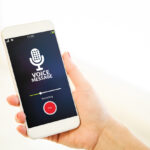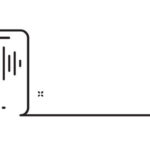Ringless voicemail campaigns can be a powerful tool for engaging prospects and customers without the intrusive nature of traditional marketing calls. However, the success of these campaigns largely depends on how well you segment your audience. Proper segmentation ensures that your messages are relevant, personalised, and timed correctly, which can significantly boost engagement and conversion rates.
In this guide, we’ll dive into best practices for segmenting audiences for ringless voicemail campaigns to maximize impact, improve customer experience, and ultimately increase your ROI.
Understanding Audience Segmentation
Audience segmentation is the process of dividing your contacts into distinct groups based on shared characteristics. Instead of sending a generic voicemail to everyone on your list, segmentation allows you to tailor your message to different groups, ensuring that it resonates with the recipients. By delivering the right message to the right people at the right time, you can significantly improve your campaign’s effectiveness.
Why Segmentation is Crucial for Ringless Voicemail
Ringless voicemail is designed to be non-intrusive, but if your message doesn’t align with the recipient’s needs or interests, it can still come across as spammy. Proper segmentation helps you:
- Increase engagement by delivering content that is more relevant to your audience.
- Improve conversion rates through personalized messaging that resonates with recipients.
- Reduce opt-out rates by avoiding generic, irrelevant messages that could annoy recipients.
Key Segmentation Criteria for Ringless Voicemail Campaigns
When it comes to segmenting your audience, there are several approaches you can take. Here are some of the most effective criteria to consider:
1. Demographics
- Age, Gender, and Location: These are basic but essential factors to consider. A message targeting retirees, for example, should be very different from one aimed at young professionals.
- Income Level: If you offer products or services that vary in price, segmenting based on income can help you deliver messages that align with the financial capacities of your audience.
Example: A financial services company might use ringless voicemail to offer a high-net-worth investment product to affluent customers while promoting a budget-friendly savings plan to lower-income segments.
2. Behavioral Data
- Purchase History: Tailor your messages to customers based on their previous purchases. If someone bought a product recently, you can follow up with a related offer or a complimentary product.
- Engagement Level: Identify which contacts have interacted with your previous campaigns. Segmenting based on engagement level helps you prioritize leads who are more likely to convert.
- Browsing Behavior: Use data from your website to see which products or services visitors showed interest in, and craft your voicemail messages accordingly.
Example: An e-commerce business can send targeted voicemails promoting products similar to what the customer has recently viewed or purchased.
3. Customer Lifecycle Stage
- New Leads vs. Existing Customers: Your message should vary depending on whether you’re reaching out to a new lead, an existing customer, or someone who has not interacted with your brand in a while.
- Inactive Users: Win back disengaged customers with special offers or personalized incentives.
- Loyal Customers: Reward your most loyal customers with exclusive deals, early access to new products, or special appreciation messages.
Example: For new leads, you might send a voicemail introducing your brand and offering a discount on their first purchase, while existing customers could receive a thank-you message with loyalty rewards.
4. Geographic Segmentation
- Segmenting by location is particularly useful for businesses with regional promotions, brick-and-mortar stores, or location-based services.
- Local events, seasonal promotions, and regional offers can be communicated more effectively through geographically segmented voicemails.
Example: A real estate company might target prospects in specific zip codes with listings of properties available in their area.
5. Psychographic Data
- Lifestyle and Interests: Understanding your audience’s values, interests, and hobbies can help you craft messages that resonate on a deeper level.
- Pain Points and Challenges: Segmenting based on the specific problems your audience faces allows you to position your product or service as a solution directly tailored to their needs.
Example: A fitness company can send personalized motivational messages to clients interested in weight loss or muscle gain, depending on their fitness goals.

Best Practices for Effective Ringless Voicemail Segmentation
Now that you know the different ways to segment your audience, here are some best practices to ensure your segmentation strategy leads to successful ringless voicemail campaigns:
1. Leverage Data Analytics Tools
- Use CRM systems and analytics tools to gather and analyze data on your audience. The insights you gain will allow you to create detailed segments that drive results.
- Regularly update your data to ensure your segmentation remains accurate over time.
2. Craft Personalized and Relevant Messages
- Once you’ve segmented your audience, personalize the content of your voicemails. Use the recipient’s name, reference their previous interactions, and provide offers that are relevant to their specific interests.
- Personalization fosters a sense of connection and shows customers that you value their individuality.
3. Test and Optimize Your Segments
- Continuously test different segments to see which groups respond best to specific messages. A/B testing can help you refine your approach and identify which segments are most profitable.
- Don’t be afraid to adjust your segmentation criteria based on what the data reveals.
4. Monitor Campaign Performance
- Track metrics such as open rates, response rates, and conversions to measure the effectiveness of your segmented campaigns.
- Use these insights to optimize future campaigns and refine your segmentation strategy.
5. Integrate with Other Marketing Channels
- Combine ringless voicemail with email, SMS, and social media marketing to create a cohesive multi-channel experience.
- For example, follow up a ringless voicemail with an email containing more details or a link to a landing page for conversion.
Examples of Effective Ringless Voicemail Segmentation in Action
To illustrate how segmentation can improve campaign performance, let’s look at a few examples:
- Insurance Company: An insurance provider segments its leads based on previous interactions with its website. For visitors who explored home insurance options, they send a targeted voicemail offering a free consultation on homeowners’ insurance policies.
- Automotive Dealership: A car dealership segments its contacts by purchase history. They send ringless voicemails to customers who purchased a vehicle a year ago, reminding them about routine maintenance services.
- Healthcare Provider: A healthcare clinic uses geographic segmentation to send ringless voicemails promoting flu shots to patients in areas with rising flu cases.
Mastering Segmentation for Ringless Voicemail Success
Effective audience segmentation is the key to a successful ringless voicemail campaign. By leveraging demographic, behavioral, psychographic, and geographic data, you can craft targeted and personalized messages that resonate with your audience. This not only boosts engagement but also increases conversion rates, helping you achieve better ROI on your marketing efforts.
In the digital age, personalized and relevant communication is more important than ever. By implementing these best practices for segmenting your ringless voicemail campaigns, you can stand out in a crowded market, foster deeper connections with your audience, and drive sustained business growth.


